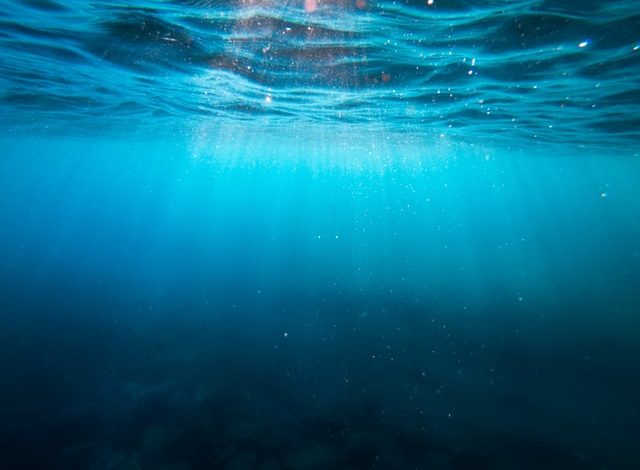How Does A City Water Filtration System Work?

The quality of water you consume has a significant effect on your health and wellness. Consuming clean and healthy water improves your health, boosts blood circulation, and improves immunity. Many cities across the United States understand the importance of clean water and so offer water treatment services to ensure that the water delivered to homes and businesses in the area is clean and free from contaminants. For city water filtration and treatment, the process is a lot more complex than a home’s water filtration. Discount Filter Stores, discountfilterstore.com, explains the process.
City or Community Water Treatment
A city water treatment is essential for a lot of reasons. Proper water treatment gets rid of waterborne diseases and pathogens that are capable of causing health problems. In addition, proper filtration removes harmful chemicals that can expose the consumer to health problems like cancer. The United States and its cities take water treatment and filtration seriously and this has made its water among the safest in the world. Being among the safest, many households have been able to prevent common health problems caused by waterborne germs and pathogens like E. coli, Giardia intestinalis, Cryptosporidium, and Hepatitis A, to mention a few.
To achieve a clean status, cities invest heavily in water filtration and treatment. The following steps are essential to producing clean water for all.
Coagulation and Flocculation
Coagulation and flocculation are the first steps in a series of steps towards water treatment and filtration for community use. During this process, positively charged chemicals are added to water to neutralize the negatively charged ions that are flowing about in it. Dirt and other harmful particles are often negatively charged and this process ensures that they are neutralized. The interaction between the newly introduced positively charged chemicals and the dirt causes the formation of larger particles known as floc.
Sedimentation
The sedimentation process involves the settling of the larger particles of dirt to the bottom of the treatment tank. After the sedimentation process is complete, the larger dirt particles separate themselves from clean water, which can be further treated or migrated to a new treatment chamber.
Filtration
The third step in a city water treatment process is filtration. The clear water that has been separated from dirt during the sedimentation process is passed through a water filter to remove harmful chemicals and other contaminants. Usually, the filter is made of sand, gravel, and charcoal. The filter is designed to remove common dissolved particles and contaminants like bacteria, viruses, dust particles, parasites, and other harmful chemicals.
Disinfection
After the filtration process, the filtered water is disinfected using chemicals like chloramine or chlorine. The disinfection process aims to kill off any remaining parasites or pathogens in the water and make it suitable for use and consumption.
While city water filtration is an important part of maintaining health and wellness, it is important to note that contaminants may be re-introduced into the treated water along the distribution lines. This is why consumers are advised to install water filtration systems to combat residual contaminants.
Why Homes Need to Treat Their Water
Although public water has been treated, consumers may end up getting contaminated water in their homes or businesses for different reasons. Usually, the pipes in the delivery pipeline may re-contaminate the water that had already been treated, thus increasing the chances of health risks for consumers. If you are wondering why you should invest in a water filter for your home, below are some reasons.
Public water often Tastes and smell bad
Public water is often over 90% clean before it leaves the source. However, during the distribution process, the pipes on the way may re-introduce chemicals and harmful pathogens that compromise the smell and taste of the water. The added minerals and contaminants can also put consumers at risk of common health problems, including cancer. Installing a water filtration system in your home ensures that the contaminants are removed before your consumption.
Public water often contains harmful chemicals and minerals
Public water sources are often compromised. This means that users cannot expect to enjoy 100% clean water that is free from contaminants. Usually, public water contains minerals, sometimes in trace amounts, that can accumulate over time to cause health issues. Chemicals like lead and arsenic may also be found in some public water sources due to different reasons. Installing a home water filtration system may be the best chance to protect against the harmful effects of these chemicals.
Types of Water Filtration for Homes
Homes that wish to enjoy a higher degree of protection from waterborne pathogens and other contaminants can take proactive steps by installing water filters. There are different options to choose from based on the size of the property, budget, and other preferences. The commonest types of water filtration systems are;
Activated Charcoal Filtration Systems
Activated Charcoal filters are designed to do the same job as the city or municipal water filtration systems. Water is forced through the activated charcoal which traps contaminants to one side and lets clean water pass through the other side for consumption. This type of water filter is often used in areas where small batches of clean water are needed, like faucets and water pitchers. ADD FRIDGE FILTERS
Reverse Osmosis Filtration Systems
This water filter comes with a permeable membrane designed to trap and remove harmful contaminants from water as it flows through it. The membrane is designed to remove microns of contaminants and heavy chemicals like lead and mercury from water.
Steam Distillation REPLACE WITH SOFTENERS & WH SYSTEMS
This process involves filtration through boiling. Water is boiled to a certain temperature where it is converted to gas and condensed into liquid form in a new chamber. The evaporative effect leaves the contaminants behind while guaranteeing clean water in the collection chamber.
The use of activated charcoal and reverse osmosis filtration systems is common to most homes and businesses. However, industries and factories may use the steam distillation process for their filtration and water treatment needs. It is important to note that there are other water filtration methods apart from the three mentioned above. The common alternatives are UV filtration and infrared filtration. These methods are commonly used by large manufacturers and plants to ensure higher quality output.
AIC Content Team, please see below line for revised content, the content below the line is what should be sent to the post publisher
How Does A City Water Filtration System Work?
The quality of water you consume has a significant effect on your health and wellness. Consuming clean and healthy water improves your health, boosts blood circulation, and improves immunity. Many cities across the United States understand the importance of clean water and water consumers on City Water systems can generally expect clean and safe water delivered to their homes. For city water filtration and treatment, the process is a lot more complex than a home’s water filtration. Discount Filter Store, discountfilterstore.com, explains the process.
City or Community Water Treatment
City water treatment is essential for a lot of reasons. Proper water treatment reduces exposure to waterborne diseases and pathogens that are capable of causing health problems. In addition, proper filtration removes harmful chemicals and inorganic compounds that can expose the consumer to health problems. Cities in the United States take water treatment and filtration seriously and this has made its water among the safest in the world. Being among the safest, many households have been able to prevent common health problems caused by waterborne germs and pathogens like E. coli, Giardia intestinalis, Cryptosporidium, and Hepatitis A, to mention a few.
To achieve a clean status, cities invest heavily in water filtration and treatment. The following steps are essential to producing clean water for all.
Coagulation and Flocculation
Coagulation and flocculation are the first steps in a series of steps towards water treatment and filtration for community consumer use. During this process, positively charged chemicals are added to water to neutralize the negatively charged ions that are flowing about in it. Dirt and other harmful particles are often negatively charged and this process ensures that they are neutralized. The interaction between the newly introduced positively charged chemicals and the dirt causes the formation of larger particles known as floc.
Sedimentation
The sedimentation process involves the settling of the larger particles of dirt to the bottom of the treatment tank. After the sedimentation process is complete, the larger dirt particles separate themselves from clean water, which can be further treated or migrated to a new treatment chamber.
Filtration
The third step in a city water treatment process is filtration. The clear water that has been separated from dirt during the sedimentation process is passed through a water filter to remove harmful chemicals and other contaminants. Usually, the filter is made of sand, gravel, and charcoal. The filter is designed to remove common dissolved particles and contaminants like bacteria, viruses, dust particles, parasites, and other harmful chemicals.
Disinfection
After the filtration process, the filtered water is disinfected using chemicals like chloramine or chlorine. The disinfection process aims to kill off any remaining parasites or pathogens in the water and make it suitable for use and consumption.
While city water filtration is an important part of maintaining health and wellness, it is important to note that contaminants may be re-introduced into the treated water along the distribution lines. This is why consumers are advised to install water filtration systems to combat residual contaminants.
Why Homes Need to Treat Their Water
Although public water has been treated, consumers may end up getting contaminated water in their homes or businesses for different reasons. Usually, the pipes in the delivery pipeline may re-contaminate the water that had already been treated, thus increasing the chances of health risks for consumers. This post-filtration contamination was most notably seen in Flint, Michigan beginning in 2014. Unsafe levels of lead were reaching consumers through the city water supply as chemicals used to treat biological contaminants from the Flint River were quickly corroding pipes and re-introducing lead particles into the water and being dispersed through taps and faucets. The Flint Michigan Water Crisis is an extreme example, however there are several other reasons why you might consider investing in a water filter for your home.
Public Water Can Taste and Smell Bad.
Public water is often over 90% clean before it leaves the source. However, during the distribution process, the pipes on the way may re-introduce chemicals and harmful pathogens that compromise the smell and taste of the water. The added minerals and contaminants can also put consumers at risk of common health problems. Installing a water filtration system in your home ensures that the contaminants are removed before your consumption.
Public water often contains harmful chemicals and minerals
Public water sources are often compromised. This means that users cannot expect to enjoy 100% clean water that is free from contaminants. Public water can contain minerals (hard water) that can accumulate over time, building up harmful scale on appliances, as well as causing itchy and dry skin. Chemicals like lead and arsenic may also be found in some public water sources. Installing a home water filtration system may be the best chance to protect against the harmful effects of these chemicals.
Types of Water Filtration for Homes
Homes that wish to enjoy a higher degree of protection from waterborne pathogens and other contaminants can take proactive steps by installing water filters, whole home filtration systems, or water softeners. There are different options to choose from based on the size of the home, budget and water profiles/issues. The most common types of water filtration systems are;
Activated Carbon Filtration
Activated Carbon filters are designed to do the same job as the city or municipal water filtration systems. Water is forced through the activated carbon which traps contaminants to one side and lets clean water pass through the other side for consumption. This type of water filter is often used in areas where small batches of clean water are needed, like refrigerator filters, faucets and water pitchers. This type of filter is commonly referred to as a ‘Point of Use Filter’, the filter attaches to the point at which you use your water (faucet, showerhead, fridge, etc). To fully filter all water in your home, you will need to install these filters at each tap, or point of use. Because these are incredibly easy to install or remove, point of use filters utilizing activated carbon (or charcoal) are a great solution for renters or homeowners with limited space.
Reverse Osmosis Filtration Systems
Reverse Osmosis Filters, or RO filters for short, are a type of point of use filter that installs under your kitchen sink and has its own tap for filtered water. The water passes through several stages of filters (usually 3-5 depending on filtration needs) that reduce sediments and chemical contaminants before reaching a reverse osmosis semi-permeable membrane that finishes the job.
It does require a bit more skill to install, but easy enough to manage for anyone with basic DIY skills. The superior filtration capabilities of RO Systems make them well worth the extra effort to install, but may not be the best fit for renters.
Water Softeners & Whole House Systems
Some homeowners may prefer the convenience of installing a water softener or whole house system at their homes main water intake, rather than installing individual point of use filters. This filtration upgrade is called Point of Entry filtration and a single system filters all water coming into your home, providing fresh clean water at every tap, without installing extra filters at each point of use.
Water softeners are the most common whole home solution used by city water consumers. Water passes through a resin tank which attracts minerals in the water, resulting in “softened water” flowing to taps and appliances. This helps reduce mineral buildup on dishes, laundry, skin, and hair and more importantly reduces the buildup hard water can leave on appliances, helping to keep your water using appliances last longer without costly repairs.
City water users can also opt to install additional filters on their softener to reduce other common city water issues like chlorine and chloramine tastes and smells. UltraViolet Disinfection can also be added to a whole home system for even better filtration. UV light waves are used to deactivate the DNA of microorganisms like viruses and cysts for the cleanest and safest water in your home.
Steam Distillation
This process involves filtration through boiling. Water is boiled to a certain temperature where it is converted to gas and condensed into liquid form in a new chamber. The evaporative effect leaves the contaminants behind while guaranteeing clean water in the collection chamber.
The use of activated charcoal and reverse osmosis filtration systems is common to most homes and businesses. However, industries and factories may use the steam distillation process for their filtration and water treatment needs. It is important to note that there are other water filtration methods apart from the three mentioned above. These methods are commonly used by large manufacturers and plants to ensure higher quality output.




